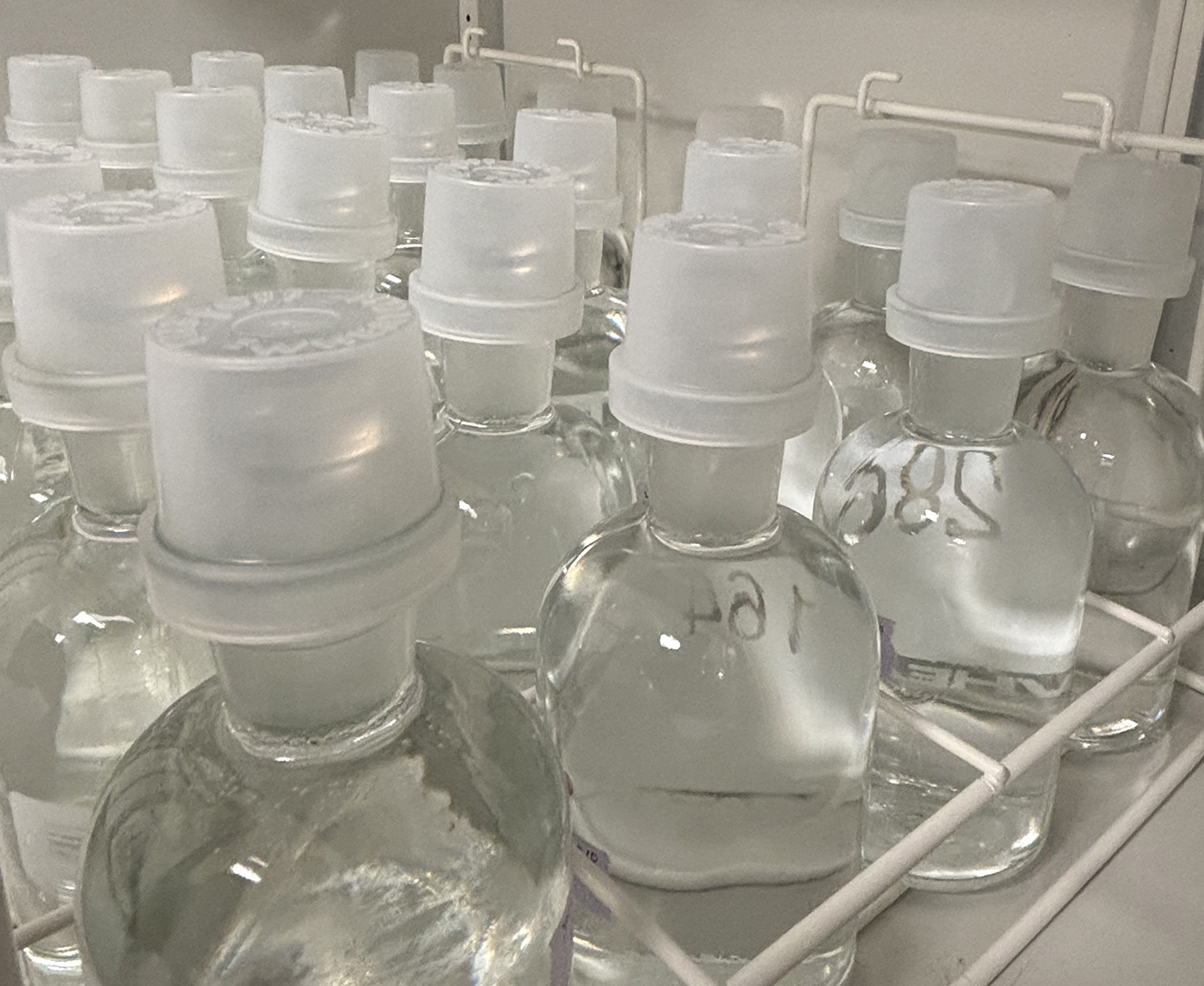Summary
The OECD 301D biodegradability test determines the ready biodegradability of a material in an aqueous aerobic environment by measuring the dissolved oxygen consumption in closed bottles. This test was developed to determine if a chemical is easily biodegradable, not to predict the actuarial rate of biodegradation in aqueous aerobic environments.
The OECD 301D Testing Method
To begin this test, a bottle is filled with water and the sample material. The biodegradation process will begin and CO2 and water are formed, consuming the oxygen that is present in the system. This occurs over 28 days. At the end of the test, the amount of oxygen that has been consumed in the system is measured and compared to the theoretical oxygen demand (ThOD) that was previously calculated.
If 60% of degradation is reached, then the material is considered readily biodegradable and is assumed to be able to undergo rapid and ultimate biodegradation in the environment. Once this is determined, no other testing is usually required. If the sample fails higher tiers of tests can be performed, including the OECD 302 and 303 to determine biodegradability.
This test is capable of testing samples that are highly soluble, volatile, and/or absorbing. Commonly, OECD 301D is used to test drugs, surfactants, and personal care products.
Turn to Aropha for OECD 301D Testing
Are you looking for cost-efficient and accurate biodegradable testing? Aropha is here to help. When you partner with us, you will be able to combine our digital twin simulation platform with high-throughput biodegradability testing to get all of the information you need to make sure your products meet the ecological standards your clients desire. From testing biodegradability and compostability to ecotoxicity, we have everything you need to properly evaluate the ecological properties of your products.
Not only do our testing services provide you with the information you need to make improvements to the sustainability of your product, but they also allow us to provide you with the necessary test documentation for you to substantiate biodegradability claims for your products.
Contact our team today to see what we can do for you!
OECD 301D Requirement and Applicability
Different testing methods are applicable for materials with different properties. Below is a summary of the applicability of OECD 301D. Please check our Method Selection Guide to select the most appropriate method for your materials. You can also find the applicability for many other methods in our Resource Center.| Test | Analytical method | Sample info required * | Poorly soluble | Volatile | Adsorbing |
|---|---|---|---|---|---|
| OECD 301D (Closed bottle test) | Dissolved oxygen | ThOD or COD * | +/- | + | + |
*”Sample info required” is the information needed to calculate the biodegradation percentages. This must be available for a selected method.
*”ThOD” can be easily calculated based on the formula of the sample. Try our Online ThOD Calculator.
*”COD” can be used as an alternative to ThOD if the formula of the material is unknown. We provide COD analysis at Aropha.
Pricing
$499/sample for High-Throughput Screening$1199/sample for Biodegradability Certification

